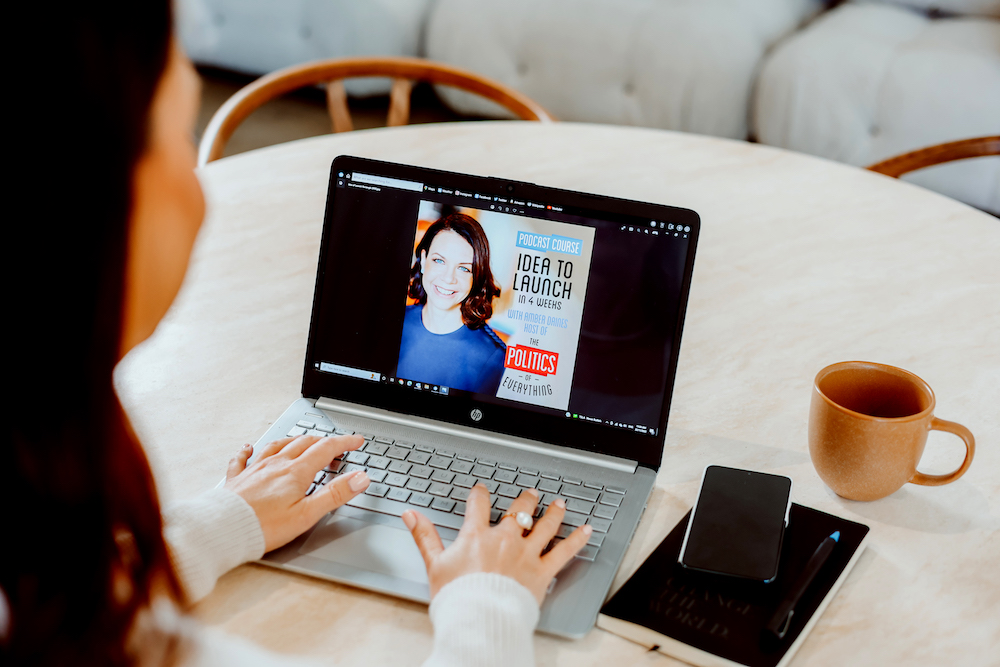Amber's Blog
Expert Ideas, Tools & Musings

What is media training, and why do I need it?
Amber Daines | 23 July, 2022Ok, I’m just going to be straight with you: In today’s digital business world, you need media training. Full Stop.
Here’s why.
Andy Warhol once famously said that we’d all experience 15 minutes of fame one day. And as it turns out, his prediction was pretty spot on. None of us, I don’t think, realised that we’d end up with a video camera in our back pocket.
This technological advancement in the past decade has changed the world, from ordinary people capturing news stories ‘as they happen’ to proud parents being able to film their kids winning races or awards or taking their first toddler steps … and sharing them wherever they want.
For businesses, the option of accessible, cheap-to-produce video has changed how we market ourselves. Those not using video will be left behind. And here’s why.
In a nutshell, digital statistics around social views, website traffic, and online advertising show that video is fast becoming the ‘King’ of all content creation.
Research tells us that people don’t read anymore. If they do, they might read a headline and 500 words. Pictures remain powerful forms of communication, but the growing trend is video which enables both sound and images.
And here’s where media training comes in.
Look good, and be confident!
Firstly, it helps you look polished and come across as confident and credible (people won’t do business with shabby or dodgy-looking companies – there are way too many scams already!). So, we’ll teach you the subtle tricks around what to wear, lighting, colours, and how to avoid ‘reading glasses glare and reflection’ – all of which will make you look better on camera.
Our media training will help you warm up’ to the camera, too – it’s not as easy as it seems, even for digital natives! We might feel comfortable in person, particularly regarding things we’re passionate about, but that natural comfort level doesn’t always translate to the video arena!
What do you want to say? Making the message count
Ok, sure, you’re probably aware of those benefits, but what you might not know is that one of the most significant things you’ll learn from our media training is how to distill your message – to say what you mean and mean what you say while coming across as genuine.
For a long time, traditional TV, radio, and print media have relied on “sound bites” – if you’re not familiar with the term, these are “good” quotes – things you might say that can be used to hang a story around.
The value of the ‘sound bite’
‘Sound bites’ underpin success in the digital age, too – and whether you have 30 seconds to say something or ten minutes, it takes skill and practice to hone the message – to get to the point and keep an audience engaged enough to take the next step — interact with your business. This skill cannot be underrated and has a component of sales, but there’s much more to it than that – it’s about building rapport, which is not easy to do on paper, via sound, or via video unless you know how….
The great thing about using video in your social media and other online marketing is that you can use it in a billion (and one!) creative ways – to tell a story, to unveil a new product line, to showcase different aspects of your product or service, to display your credentials with small snippets of advice, to advise of essential changes in your industry – the list is endless!
Generating a ‘following’
Let’s say, for example, you’re an accounting firm, and you want to advise your clients that the Australian Tax Office has introduced a new regulation around Family Trusts …. Do you know how to capture attention with your message?
Or, let’s say you’ve been selling a product online and just found out (via customer feedback) that the goods are faulty. The entire shipment is defective. Do you know how to handle a crisis?
Would you know how to use both scenarios to build a loyal following?
Which media?
Of course, it is not all about video (although these days, that’s a huge component). Media training will help you understand how all forms of media work and help you grasp a basic understanding of how you might use these forms of media together in a cohesive strategy.
The other great thing about our media training is that while it is built around the principles of what will work successfully with the media – it will also help you to adapt your message to each platform, whether it is in a social media post, a TV interview, a blog or a podcast.
Plus, as a by-product of completing the training, you’ll become much more confident in front of any audience, whether it’s making the birthday toast, addressing your team on an important occasion, selling your services, promoting your brand, or championing a cause, or managing a crisis.
Find your authentic voice
When I think of someone comfortable with the media, Simon Sinek comes to mind. Whether he’s being interviewed or providing short, snappy inspirational posts, he’s confident – he is quietly passionate about his subject, but it shines through because he is personable, he’s developed his brand – relaxed, gentle, wise … and he has a HUGE following.
Tony Robbins is also very confident with the media – but with a very different style from Simon Sinek. Both work and you know why? Because they’re genuine. Each is always, without fault, true to their personalities, delivery, style, and content.
At Amber Daines, our media training is different – because we don’t want to teach you to be “someone confident talking to the media,” we want to help you find your unique voice. Because that’s where your power is. Like Simon Sinek, like Tony Robbins – we want you to be YOU.
We’ll help you embrace your strengths and identify any weaknesses you want to improve.
Most of all, we’ll help you to be authentically you in every setting – meetings, sales pitches, media interviews, and social posts.
So, contact us. Media training is not as expensive as you think – AND – it’s a sensible investment, especially in the digital age.
